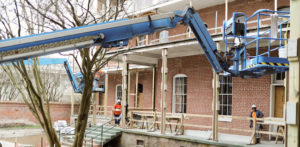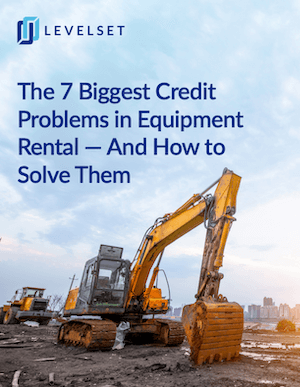
When a construction customer files for bankruptcy in the middle of a project, equipment lessors need to act quickly. Failure to take the right steps can cause them to lose their equipment and dramatically reduce the amount they get paid.
It’s a well-known fact that much of the heavy equipment and tools seen on construction sites are actually rentals. They don’t belong to the company running them. Rental companies purchase equipment and rent, or lease, the machines to construction firms. These companies enter into contractual agreements with specified terms and conditions.
Depending on state laws, when the company renting the equipment fails to meet its payment obligations, the rental company can file a mechanics lien. They generally have the right to recover the equipment from the site as well. The lien attaches to the property, and the time it takes to get paid is drastically reduced.
When a construction customer is facing bankruptcy, protecting your payment becomes priority number one.
Related: The #1 reason why construction companies go bankrupt
In construction bankruptcy, an equipment lease may be recharacterized
When a contractor files for bankruptcy, all of their assets, liabilities, and accounts freeze in time under the automatic stay. This includes accounts with leasing companies and equipment suppliers.
“Bankruptcy courts have ruled that agreements on leased equipment aren’t true lease agreements at all.”
Equipment leasing companies that are trying to recover cash or equipment during a bankruptcy may find themselves in a difficult position, especially if they don’t have a mechanics lien claim. They have to wait for the court’s decision before they can recover their money.
In some cases, bankruptcy courts have ruled that agreements on leased equipment aren’t true lease agreements at all. The courts state some agreements actually constitute a “disguised financing agreement.” This really hampers the lessor’s options.
A mechanics lien claim and other secured debt is prioritized during a bankruptcy. Financing agreements, on the other hand, fall under the protection of the automatic stay.
It’s no longer your equipment
Should a court recharacterize a lease agreement as a financial agreement during a bankruptcy, the lessor can’t recover the equipment. This is a major difference from the mechanics lien process during bankruptcy.
When a court considers lease agreements as disguised financing agreements, they’re considering the lessee (e.g. the contractor renting the equipment) as the owner of the property. This means the leasing company has no right to repossess the equipment.

Download a deadline chart for equipment lessors
Get the equipment lessors’ guide to protecting payments in every state.
If the equipment is worth more than the debt owed, the leasing company will most likely get paid in full for the value of the equipment. This includes the depreciation, but they’ll likely lose the rights to the machine itself.
If the equipment is worth less than the debt, an even darker challenge presents itself. In this scenario, the leasing company will receive payment for the value of the equipment, and there would be an unsecured claim paid for the disputed amount. This unsecured claim usually amounts to pennies on the dollar.
The cash flow a machine generates is more valuable than the machine itself. If a court recharacterizes your agreement, you lose the machine, the cash flow it generates, and possibly most of the disputed payments.
Factors that determine the character of your agreement
There are a few things a court will take into consideration to decide the character of an equipment lease agreement during a bankruptcy:
- Did you buy the equipment specifically for the lessee?
- Was the equipment custom ordered or modified specially for the lessee?
- Are there a small number of payments remaining in the agreement?
- Does the arrangement permit or require the leasing company to purchase the equipment?
There are more criteria, but the answers to these questions are important. They can determine whether you’ll be able to file a mechanics lien against the lessee when a bankruptcy is involved.
“It’s important not to wait to take action.”
If you know that you’ll be answering “yes” to some of the questions listed above, you could be in an awkward position. If that’s the case, and you’re experiencing payment issues, it’s important not to wait to take action.
Inadvertently, you’ve set the groundwork for a bankruptcy court to recharacterize your lease as a financing agreement. You could lose rights to your equipment and sacrifice your cashflow.

Get the credit guide
Download a free guide to learn how to solve the 7 biggest problems that credit teams face in equipment rental companies.
Why construction bankruptcy matters to an equipment leasing company
As a leasing company, you need to hedge your bets. Prequalifying your customers is important when you’re risking your equipment. But it’s downright crucial when you’re risking your cashflow.
As an equipment lessor, you should be requesting credit information from all of your customers. You can also purchase a credit report from several different sources that track business credit.
If you’re having trouble getting paid for equipment that you’ve supplied to a job site, don’t hesitate to take action. Filing a mechanics lien now may help your equipment leasing business avoid the bankruptcy scenario altogether. Even if a bankruptcy isn’t involved, using your mechanics lien rights is also the best way to speed up your payment across the board. You don’t want to wait for a court to decide how your agreement is characterized. It isn’t worth the risk.